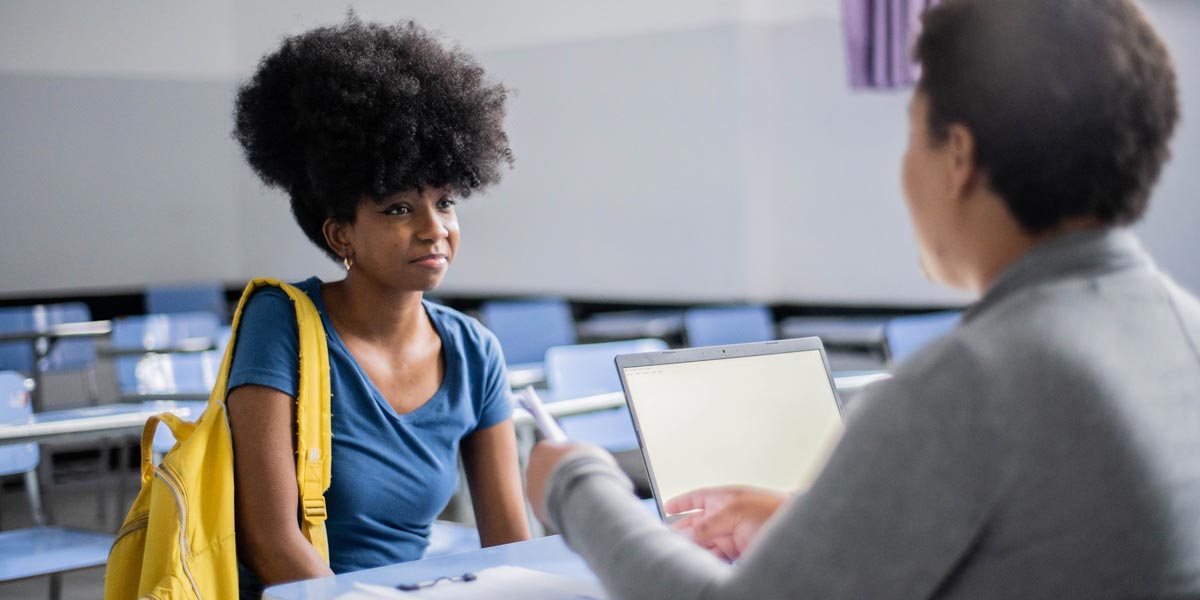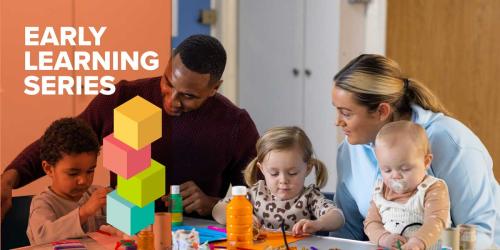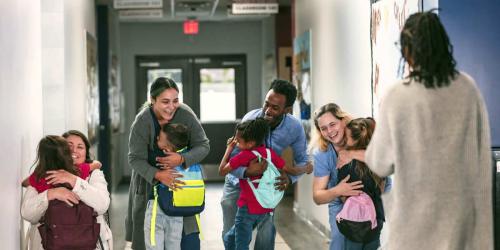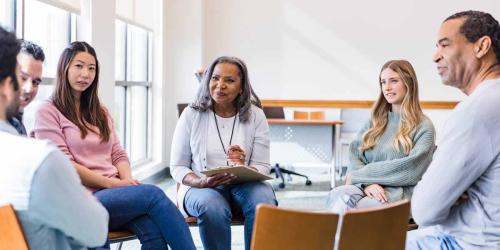Social and Emotional Learning: Where Do You Start?

Nonacademic skills. 21st-century skills. Mindsets, essential skills, and habits (MESH).
These are just some of the terms used interchangeably with social and emotional learning (SEL) skills, which include impulse control, perspective-taking and problem-solving.
According to Karyn Lewis, a researcher at Education Northwest, many people define SEL as anything that isn’t directly related to academic achievement.
“However, defining something by what it is not instead of by what it is doesn’t help us to hone in on a coherent definition of SEL,” she says. But regardless of what they’re called, SEL skills are increasingly being recognized as critical to students’ success in school—and life.
Being Mindful and Flexible
The SEL field is relatively new and still evolving. That fluidity can empower educators to try new things and be creative, says Education Northwest’s Lauren Bates, who specializes in evaluation and research projects.
But given that new SEL-related tools and research findings are being released frequently, she says educators should also be mindful and flexible as SEL research has not yet caught up to where the field wants to go. “This means educators should pay especially close attention to how their students respond and be ready to adjust what they’re doing.”
Leading by Example
SEL research has found that positive behaviors and attitudes are just as important in teachers as they are in students.
Along those lines, modeling is one way educators can develop their SEL competencies while creating a positive classroom culture.
Classrooms where mistakes are celebrated help instill a growth mindset in students. It follows that students could benefit from seeing adults make mistakes and embrace the learning experience. This could take the form of working a mistake into a calculation performed on the board in math class, for example, and then letting students help correct it.
–Karyn Lewis
SEL Through an Equity Lens
“You can’t separate who you are from are from what you believe and how you grew up,” says Celeste Janssen, director of IYS. “SEL is about personal identity, and it’s important to understand how families and communities build SEL skills in students and how these skills may be valued differently.”
For this reason, it’s important for educators to think of SEL classroom strategies through an equity lens and adapt them accordingly.
This can be challenging, however, and the available research and resources often do not take students’ cultures into account.
For example, students from some cultures might place particular emphasis on developing a future orientation or goal setting as a means to get ahead personally. Students from other cultures might prioritize collaboration, group harmony and contribution to their community.
Just as educators are interested in making sure their curriculum aligns with a student’s culture, SEL methods must also be sensitive to culture and context.
“It can be difficult to find SEL materials that are designed to be responsive to culture,” Janssen says, “so we encourage our partners to look at the research and then ask a series of questions about that research.” These can include:
- Where are these data from? Were these data collected in a culturally responsive manner? Did this research include specific people that look like me?
- Can you change adult behavior to change an environment?
- Is this an asset- or deficit-based conversation?
- Is there a different cultural understanding of this concept?
- How do families I work with talk about this concept?
- Is my language using an individualistic or community-oriented sense of self?
- How can I illustrate this in a culturally relevant manner?
Belonging as a Foundation
Research shows that belonging isn’t just a warm, fuzzy feeling that’s nice to have but rather is an essential human need. Think of the difference between wanting a piece of chocolate cake and needing nourishing, healthy food. It would be nice to have cake, but you could go without. You can’t go without basic nutrition.
–Karyn Lewis
To cultivate students’ SEL skills, educators should start by creating welcoming and safe classroom environments.
This helps build a sense of social belonging, which sets the stage for many important attitudes and behaviors, including motivation, perseverance and a strong academic identity.
In addition, social belonging can go hand in hand with many other equity-related priorities, such as improving school climate and working with families to increase student attendance.
To develop students’ sense of belonging, educators can use various strategies.
However, according to Janssen, educators may not necessarily want to begin by creating or adapting a curriculum.
“People of all ages learn SEL skills through relationships.” says Janssen. “Consider how your classroom can be relationship-rich and trauma-informed.”
To that end, schools can draw inspiration from after-school and other youth development programs that encourage participants to engage in experiential learning and creative problem-solving—and vice versa.
“It’s great when classroom educators and youth workers meet and talk about what they are doing,” Janssen says. “There’s a lot these two groups can learn from each other about developing their students’ SEL.”
How Do You Know Whether You Are Having an Impact?
The research is not yet ready to support measuring students’ SEL skills, mindsets and capacities for accountability purposes.
However, surveys and other SEL measurement tools can provide valuable formative information that can help schools set priorities or gauge the impact of program improvement efforts.
A useful resource is Measuring Social and Emotional Learning: A Brief Guide.



